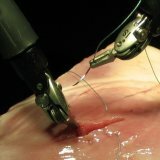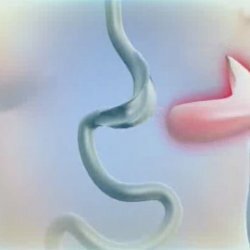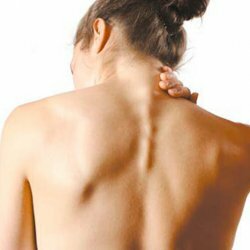Suture materials for surgery

Principles of suture material selection.
The process of wound healing can range from a few days to six months. It depends on the type of tissue - for the skin is enough days, for muscle tissue weeks, and for the tendons and blood vessels for months. The rate of healing of postoperative wounds is also affected by individual patient characteristics. And of course it depends on what suture materials were chosen for surgery.
The choice is based on the fact that the seam should be durable and this strength was maintained until the tissue was completely restored. There are cases when the fabric can not restore its properties, then choose materials that over the years do not lose elasticity and strength.
Suture materials can be classified into two main groups: absorbable and non-absorbable. In any case, regardless of the choice of suture material, it is a foreign body for human tissue and causes a more or less noticeable response from the body. The absorbable materials gradually degrade during the healing process, i.e., depending on the type of filaments, they dissolve under the action of tissue enzymes or due to hydrolysis in tissue fluids. It only happens gradually. Non-absorbable surgical materials usually do not degrade, but also grow into tissues, isolated from them by a fibroblast membrane. There are such materials that the doctor removes after partial healing - removes the stitches.
The structure is simple threads, they are easily tied in knots, and woven. Strength of the filament is determined not only by the chemical properties of materials, but by geometric dimensions, primarily by diameter.
Some nuances when working with surgical sutures:
- After complete restoration of the strength of the tissue, the seams should be removed. In tissues that slowly heal, you need to use non-absorbable for surgery sutures. If the wounds heal quickly, then it is better to take absorbable materials.
- Contaminated fabrics are particularly sensitive to contaminants, so they easily become inflamed. When working with them, simple absorbable threads should be used.
- To obtain a good cosmetic effect, use nylon or polypropylene, the wound is closed with intradermal sutures.
- Sutures are foreign bodies for the body, and in the combination of a liquid with a large concentration of crystalloids, can lead to the formation of stones and the occurrence of inflammation. For this reason, during surgery in the bladder and bile ducts, rapidly absorbable suture materials are used.
- During the operations, they try to find the materials of the smallest size and at the same time with a large margin of safety.
Modern technologies for today have allowed to develop a whole series of essentially new non-absorbable suture materials, which are simply irreplaceable for surgery. These materials meet all the highest requirements of medicine, but, alas, have a high cost and are not used for this reason so often. But the most popular are still lavsan, kapron and silk. They are of low cost, easy to handle and sterilized. However, in addition to their advantages, they also have drawbacks - increased reactogenicity and traumatism. If to say it is easier, the probability of introducing infection into the wound increases.
The desire to improve the cheap and time-tested sutures led to the beginning of the modification work. The developers have set themselves two main goals: the material must meet all the most stringent requirements of modern surgery, and also have a low cost. And here is a simple solution - the serially produced surgical threads are covered with an ultra-thin layer of polypixylene. It is a polymer of the family of super thin films. This coating makes it possible to form a comfortable seam on any of the most complex surfaces, be it narrow slits or capillaries, or ripped edges of the wound.
In polymerization, suture materials lose their negative properties of energy impact on the surface being treated, which means that their physical and mechanical properties are not degraded. In the world, all progressive countries are engaged in the development and introduction into production of materials for surgery based on the technologies of polypixylene. Still these technologies name PPK and use not only at manufacturing surgical suture materials, but also for protection of electronic products, space technics, exhibits of museums and libraries. In medicine, PPC coatings are used not only as sutures, but also to ensure biocompatibility with prostheses, implants and probes.
Treatment of surgical threads with PPC coating in general in a dry state hardly increases their strength, except for dolcano. Its strength is increased to 50%, the friction and tightening force is reduced, and, hence, the level of traumatic suture material is reduced. Nodes are easier to tie. The polymer becomes hydrophobic when wet, and the strength of wet filaments coated with polypixylilene increases. The strength of dry and wet filaments of polymeric materials is almost the same. This is a particularly important effect for silk, strength, which when wet gets reduced by 30%.
Properties of modified materials :
- surgical threads acquire the properties of hydrophobicity, namely, when wet, loss of strength is excluded;
- several times reduces the coefficient of friction when applying a seam on biological tissue;
- decreases the inflammatory process in the seam area;
- postoperative scar will be mild;
- modified threads are easier to slide on the tool than conventional threads;
- is less often broken down into fibers when working with a needle;
- is stronger than conventional threads and is less likely to break.
The use of an improved suture reduces the local inflammatory response, especially when it is strong with pure silk, and accelerates the healing process.



